- Home
- Ian McDonald
Empire Dreams Page 10
Empire Dreams Read online
Page 10
W. B. YEATS: Thank you, Emily. Now, if you could please tell us, what is the precise significance of the torc which was given to you in this otherworldly drama?
EMILY: (Shows consternation.) Why, I am the Queen of the Morning, I am the mortal woman taken to be the immortal bride through the hole in the Bridestone … I am … I have … They have told me I have the power of the deep magic.
W. B. YEATS: Deep magic? What is that, Emily?
EMILY: The power of wishing, the power of transformation, the power to change nature at the most fundamental level of its being.
H. ROOKE: Excuse me, Mr. Yeats, but this is incredible.
W. B. YEATS: Yes? Oh, thank you, Emily, that will be all for the moment. Go on, Mr. Rooke.
H. ROOKE: This is incredible: the girl seems to be referring to herself as the embodiment of the Morrigan, the Celtic myth of the shape-changer. The mythological sources seem to hint that the Morrigan does not transform herself so much as transform the perceptions, even the reality itself, of those about her. This is quite fascinating, Mr. Yeats. We must continue immediately.
E. G. DESMOND: I am afraid not. I must protest. My daughter is not some sideshow or circus freak for your amusement. I will not tolerate her further humiliation before her own father and mother, no, I will not tolerate it, nor will I tolerate any more of this … idle superstitious tommyrot masquerading in the guise of science and reason! Gentlemen, I must demand that you terminate these … these … parlour tricks forthwith! My daughter’s childhood years will not be muddied by your unscientific vapourings! Caroline, I wish to speak with you …
* * * *
Extracts from Dr. Edward Garret Desmond’s and Lord Fitzgerald of Claremorris’s paper submitted to the Irish Astronomical Bulletin: not accepted for publication.
On the 8th August at 12:15 P.M. it was observed that the transtellar vehicle had ceased generating explosions, having shed sufficient velocity to match the pedestrian pace of our solar system. Its final proper motion was approximated to be fifteen miles per second.
The vehicle maintained course and velocity over the days preceding perigee. It was not until the night of the 27th August that conditions were suitable for the experiment. That night the sky was clear, Sligo Bay uncommonly calm, and the extrasolar vehicle two days from perigee of 156,000 miles. At 9:25 P.M. the signal was activated and for a period of two hours the primary communication code was transmitted; that is, pi expressed as the approximate ratio of twenty-two over seven. This sequence was repeated every two hours for two hours until local dawn at 6:25 A.M. Simultaneous with the operation of the stellagraph, the vessel was closely observed through the Craigdarragh 18-inch reflector telescope. No change in luminosity was observed.
After nightfall on the following day, August 28th, it again being clear and calm, the floating stellagraph was again activated, transmitting the pi ratio for an hour, then flashing the natural exponent e expressed as the approximate fraction of nineteen over seven. As before, this cycle was repeated every two hours for two hours. As before the spatial object was closely observed through telescopes.
At 3:19 A.M. the luminosity of the object suddenly increased drastically for an extremely short period of time: a flash. After a short pause came another flash, a short pause, then a third. The flashes were observed to be regular in interval, and timing of the intervals proved them to be 3.141 seconds in duration: pi to three decimal places. Sensitive and accurate timing equipment would doubtless reveal the period to be accurate to a far greater number of places. It was also discovered, quite by chance, that the interval between flashes themselves corresponded with similar accuracy to the natural base e.
(Several sections omitted here.)
* * * *
EMILY’S DIARY: AUGUST 28, 1909.
I KNOW THEY are there, I can feel them, I can hear them, calling for me, calling me by harp and flute, calling me away away away, away from the mortal world, into the dream-time, into the never-ending dance. They are afraid, they hide themselves under the eaves of Bridestone Wood, but I know they are there, waiting for me. It is the great light in the sea they are afraid of, it is evil, they say, it is steel and iron and hard hard coldness, but they have braved its man-light to fetch me to the Bridestone: the bride to the Bridestone.
All the day long my heart has yearned for my Lugh, and now as the silver spearpoints gather in Bridestone Wood and the faery steeds stamp their hooves in impatience, I long to cry to the mountains, “Not long, not long, the mortal bride comes, she comes.” All is ready. I have braided my hair, I have cast off my confining human clothes, and on my wrist I wear the token of Lugh’s love, the golden torc; I only delay to set down these words in you, dear diary, for after tonight I do not know if I shall ever return to you again. Maybe then someone will read your pages and sigh and pine for the love they contain, and maybe understand. I am a woman! I am a woman! I am not a child! I am Queen of Morning, my heart has passed through the hole at the centre of the Bridestone into the land of the Ever-Living Ones.
* * * *
DR. EDWARD GARRET DESMOND’S PERSONAL DIARY: AUGUST 29, 1909.
I AWAITED LAST night with the thrilled expectancy of a child awaiting Christmas. I could hardly wait for darkness to descend and communications be reestablished with the otherworlders. At the pre-arranged hour Lord Fitzgerald down in Sligo town operated the floating stellagraph and transmitted our recognition signal. From my observatory I could see the floating cross of pontoons, filling all of Sligo Bay, flashing our proud message of will and intellect to the stars. Almost immediately the space vehicle replied in kind with a series of pulsed emissions from its mighty star-engine: again, pi and e.
It was then that the first of the night’s bizarre occurrences happened. All of a sudden the observatory was plunged into Stygian gloom. By now accustomed to these failures of the electrical supply, I lit the oil lamps I have had installed with just such a contingency in mind. Then Mrs. O’Carolan rushed in from the main house in a terrible to-do, flustered and flapping and gabbling something about the current having failed over the whole county. I abandoned my telescope and reached the window just in time to see the lights of my fine floating stellagraph plunged into darkness. Just as abruptly the glow from Silgo town vanished as if some vast hand had snuffed it out. As I was later to learn from the pages of the Irish Times, the electrical supply for the entire North West of Ireland was blacked-out (a good descriptive phrase for a semi-literate journalist) at its source in the generator chambers of the Sligo, Leitrim, Fermanagh and South Donegal Electrical Supply Company for a period of four hours. As yet ignorant of this, I was greatly fearful at the time and imagined for an instant that my signal attempt had brought some dreadful star-doom down upon our earth. Then the second bizarrity occurred.
The star-vehicle, which I had kept under observation in my telescope, suddenly emitted a stream of pulsed lights. It took me a moment to clear my befuddled wits and recognise the underlying pattern, and I must confess that when I did, I was astounded to the point of stupefaction. It was Morse code! What is more, a Morse code transmission in English! How the Wolfii achieved this feat I cannot imagine; all I could do was hastily jot down the signals which I noted, even in my incredulous state, were in the form of repeated cycles of messages. I have since transcribed them and note them down herewith.
Greetings … greetings … greetings
He of dawn to:
Transformer
Translator
Shaper of Reality
We return thy power to thee:
Shaped we
Translated we
Transformed we
By she of the sunlight.
Greeting … greetings … greetings.
The message was repeated over three hundred times. And now I must record the greatest mystery of that mysterious night. At 12:16 A.M. the object flared again, taking me quite by surprise and momentarily blinding me. When I regained my customary clarity of vision I observed that the space-vehicle was accel
erating by the same means I had hypothesised: titanic explosions of stellar force, one every four and one half minutes. The object was leaving the proximity of our earth and travelling in the direction of the constellation Lyra. The star-crosser accelerated thus for fifty-three minutes and then, at three minutes past one, it abruptly vanished from my telescopes. There was no evidence of any explosion, no burst of light; the object had vanished as utterly as if it had never been: no conjuror vanishing a lady into thin air upon the Dublin stage could have matched that feat and the vacuum of space is thinner by far than the most rarefied of airs.
I searched the heavens frantically for some trace of the great star-vehicle but it was quite gone. As I was musing what might have befallen that brave vessel the electrical supply was restored, all at once and, as I subsequently learned, to the whole of the Western sea-board of Ireland.
My head was spinning with imponderables as I tried to ascribe some sense and order to the events of the night. Couid there possibly be any connection between the strange happenings? What of the extrasolars’ enigmatic message and their mysterious fate? It was upon such musings that I was intent when Caroline burst in upon me to inform me of the dreadful news that Emily had been found wandering in high distress on the Sligo Road by a police constable….
* * * *
FROM THE REPORT OF CONSTABLE MICHAEL O’HARE, DRUMCLIFFE R.I.C. STATION.
UPON THE NIGHT in question I was proceeding on my bicycle along the Sligo Road towards the Rosses Point Police Station where there had been numerous complaints of the sudden failure of the electrical supply to certain well-to-do households. At approximately half past midnight, as I was passing the place on the road where Bridestone Wood comes down to the sea, I heard a noise like crying and sobbing coming from the edge of the road. I advanced with caution and by the light of my bicycle lamp I saw a young lady huddled by the forest wall in a state of great and obvious distress. She was quite naked, I am ashamed to say, and covered in cuts and bruises. I was unable to console the young lady, so great was her distress, but for the sake of decency and the coolness of the air I lent her my police cape to cover her modesty. I decided to take the young lady to the O’Bannon residence, Mullaghboy, not a quarter-mile distant, where a doctor might be fetched. However, she would not consent to be moved from the side of the road. I attempted to glean some inkling of what might have befallen her but what information I did glean was fragmentary and incoherent.
Between sobbing fits the young lady mentioned the Bridestone, brides, the King and Queen and some person, possibly of foreign origin, whose name I took to be Lew. More significantly, she spoke of violation, stolen maidenhood, ravishment, and unfaithful lovers. From these statements, her unclad state, and her general air of distress, it was apparent to me that some form of improper assault had been made on the young lady. It was therefore imperative that I get her to a safe place where I could summon the necessary medical, police, and priestly assistance. Knowing that any attempt to force her to accompany me would only increase her distress, I finally persuaded her to mount my bicycle, and wheeled her to Mullaghboy House. As we turned into the drive, the local electrical supply was suddenly restored….
* * * *
EXTRACTS FROM THE REPORT OF DR. HUBERT ORR, ROYAL COLLEGE OF SURGEONS, DUBLIN.
PHYSICAL EXAMINATION OF the patient revealed her to have indeed suffered some form of sexual ravagement, resulting in pregnancy, undoubtedly upon the night in question. However, it is not the physical aspects of this case which are so intriguing as the psychological ones …
The recent works of the Viennese Dr. Sigmund Freud have aroused great interest in the subliminal processes of the mind, particularly in the field of repressed sexual feelings. In the patient’s case I feel this to be a significant contributing factor. The repressive regime of the teaching sisters at Cross and Passion School has been well testified to in the girl’s diaries, and, coupled with her hints as to juvenile dalliance in illicit love with its consequent fear of censure and punishment, would certainly drive her sexual longings deep into what Dr. Freud terms the “subconscious” and seal them there under layer upon layer of guilt. On her return to the romantically idealised home environment, these restraints would be loosened, the patient’s sexual imagination permitted full play, generating hosts of hysterical delusions: faeries, goblins, warriors, kings, druids, lovers. It is significant that many of the patient’s fantasies are unconscious recapitulations of her own earlier imaginings: her poems, the works of W. B. Yeats, the stories of the locality told to her by the cook, Mrs. O’Carolan: the seeds of hysteria had been sown and only needed the proper soil to germinate.
… The role of the father is most interesting. It is clear from her early diary entries that the patient idolised her father and his work, yet at the time of the “Craigdarragh incident” she was quite hostile both to him and to his work. Why should this be? Perhaps a clue lies in the patient’s response to her sixteenth birthday. She clearly considered herself to be a woman in the fullest sense of the word, but her father refused to see her as anything but a little girl, immature and dependent, and it is quite likely that such a hysterical retreat into superstition and mythology was a subconscious backlash against her father and his scientific work. Through her fantasies, the patient was attacking her father.
… However, I am utterly at a loss to explain the photographs of the faery folk: it is not within my sphere of professional competence to proffer any authoritative statement concerning them, though I think it likely that they may have been cleverly falsified and that it was vital for the patient’s desire for them to be true that she lie even under hypnosis …
* * * *
Glendun
Blackrock
Blackrock
County Dublin
September 20, 1909
My dear Mr. Yeats,
I have studied all the material pertaining to the Craigdarragh case with the greatest scrutiny, and though I find Dr. Orr’s conclusions interesting and far-sighted, I do not feel they quite adequately explain the remarkable events to which we were partly privy.
Recent research has uncovered a close relationship between emotionally (read sexually) disturbed adolescents and bizarre psychic activity, such as poltergeists, phantom noises, and strange lights in the sky. The admirable Dr. Orr has applied Freudian theories in one fashion; I would now apply them in another to suggest that in the Craigdarragh case, the patient’s repressed sexuality was lashing out from the subconscious in paroxysms of supernormal activity, including the electrical failures, the moving furniture, and, ultimately, the faery manifestations.
With regard to this last point I must warn you that I am engaging in the purest speculation when I wonder if it is possible that at a deeply subconscious level, far beyond any yet tapped by hypnosis or theorised by Dr. Freud, the human mind is in direct contact with the underlying structure of the universal all? What I am thinking is that in certain individuals, or under certain circumstances, the barriers between this deep preconsciousness and normal consciousness may be lowered, even abolished, allowing the nature of reality itself to be changed. The power of mind over base matter, the power of generating material objects by force of will, has indeed been long maintained by certain Eastern mystics. What I am proposing here is a scientific rationale for this phenomenon.
By now my reasoning should be obvious to you, my dear Willie: in the Craigdarragh case it could indeed be that the faeries were real, generated out of the patient’s frustrated sexual longings touching upon the ancient reality-shaping consciousness at the core of her psyche, and that power in turn taking the form of her fancies and fantasies. That she mentioned the Morrigan, the Celtic Shifter of Shapes, is highly significant in this respect: it was the very shape of reality itself that was being shifted!
At first I was convinced that these manifestations were purely subjective; it being a simpler matter to shape a person’s perceptions than obstinate matter. Then I paused to reconsider. The evidence of the photogr
aphs is compelling, also the golden torc which Dr. Hanrahan of the National Museum has authenticated, and the tragic conclusion of the Craigdarragh episode is proof that the apparitions were sufficiently real to turn on Emily and ravage her. Her guilt never left her and in the end it was the guilt that took hold of her reality-shaping ability to punish her for her sins. Such, I fear, may ever be the penalty for dabbling in powers too mighty for men. We are vessels too weak by far to hold the power of God.
One final observation, and this, my dear Willie, is the most outrageous of all. If Emily could generate a host of the Sidhe (possibly out of the electricity stolen during the power failures?) she could have as easily generated the astronomical object Dr. Desmond maintained was an unearthly space-vehicle. It is only a matter of scale and projection…. Forgive me, Willie, if these words sound like the ravings of a lunatic; I rather fear that some of the implications of this case frankly scare me. But there are too many co-incidences between the faery and the astronomical for any other conclusion to be tenable. The alien craft’s signal, in Morse code, in English, is meaningless unless interpreted in terms of Emily’s reality-moulding imagination; indeed, any other explanation is impossible. Emily created both faery host and Wolfii, and at the moment of her sexual completion, her guilt, her fear, her ultimate destruction, shut the door between merely subconscious and preconscious and burst her power like a bubble. The faery host returned to Otherworld, and the alien star-crossers and their incredible vessel dissolved into the nothingness out of which Emily’s mind had called them and imbued them with their brief phantom lives.

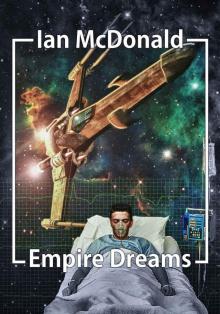 Empire Dreams
Empire Dreams The Menace from Farside
The Menace from Farside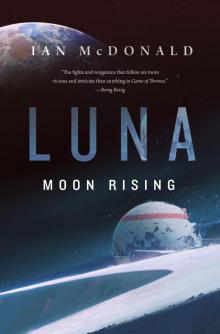 Luna: Moon Rising
Luna: Moon Rising Moon Rising
Moon Rising Desolation Road dru-1
Desolation Road dru-1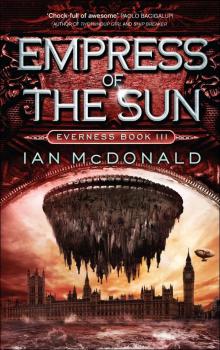 Empress of the Sun
Empress of the Sun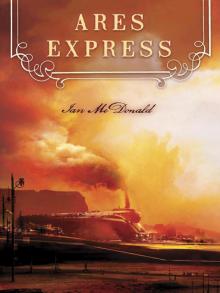 Ares Express dru-2
Ares Express dru-2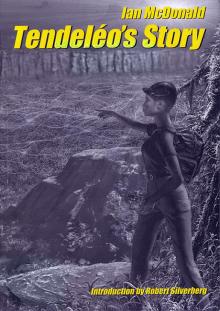 Tendeléo’s Story
Tendeléo’s Story River Of Gods
River Of Gods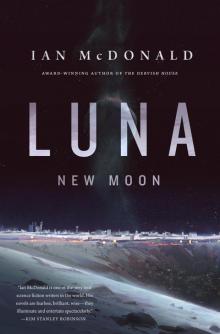 Luna
Luna![Cyberabad Days - [River of Gods 02] Read online](http://i1.bookreadfree.com/i1/03/29/cyberabad_days_-_river_of_gods_02_preview.jpg) Cyberabad Days - [River of Gods 02]
Cyberabad Days - [River of Gods 02] Clarkesworld Magazine Issue 76
Clarkesworld Magazine Issue 76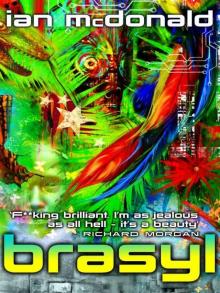 Brasyl (GollanczF.)
Brasyl (GollanczF.)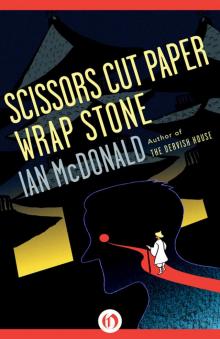 Scissors Cut Paper Wrap Stone
Scissors Cut Paper Wrap Stone Chaga
Chaga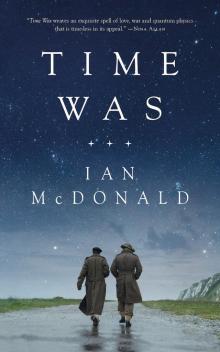 Time Was
Time Was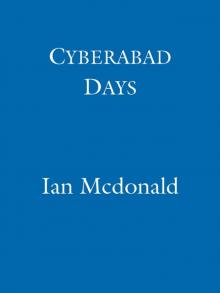 Cyberabad Days
Cyberabad Days Be My Enemy
Be My Enemy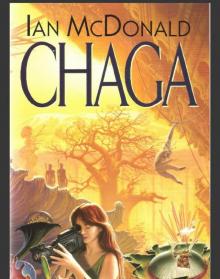 Changa
Changa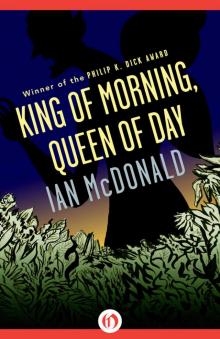 King of Morning, Queen of Day
King of Morning, Queen of Day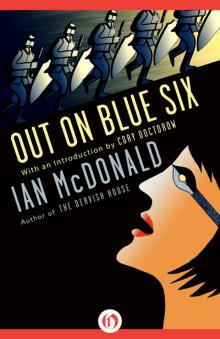 Out on Blue Six
Out on Blue Six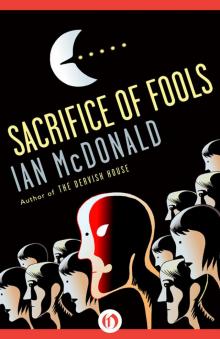 Sacrifice of Fools
Sacrifice of Fools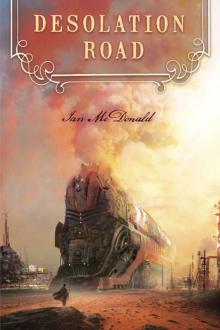 Desolation Road
Desolation Road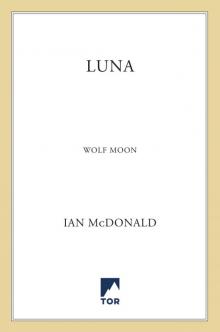 Luna--Wolf Moon--A Novel
Luna--Wolf Moon--A Novel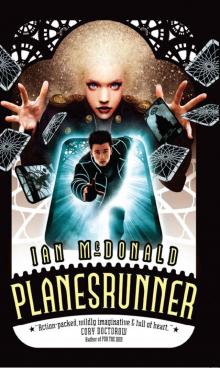 Planesrunner (Everness Book One)
Planesrunner (Everness Book One)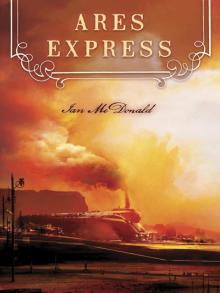 Ares Express
Ares Express